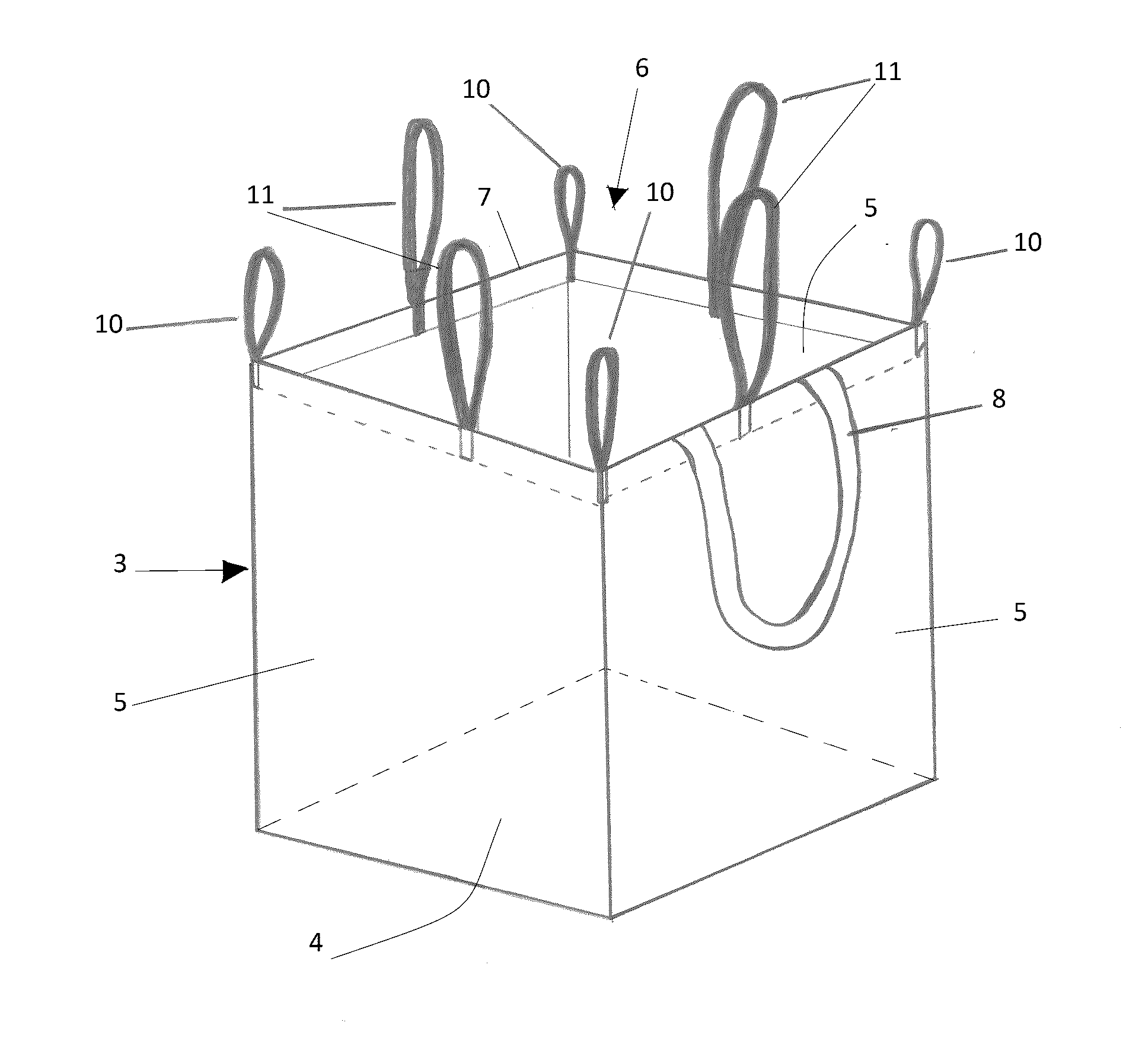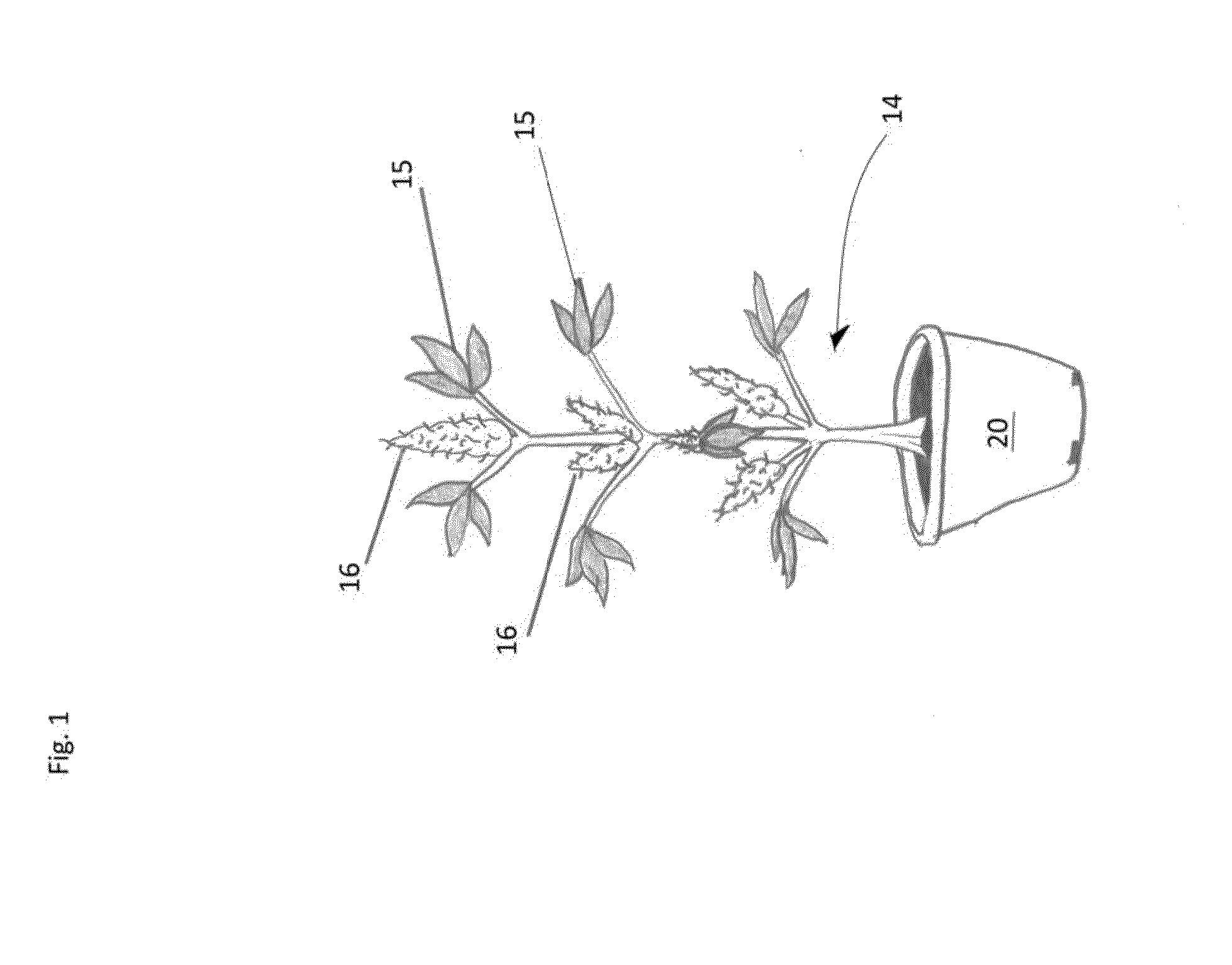Low-Stress Plant Training
a plant training and low-stress technology, applied in the field ofhorticulture, can solve the problems of crop damage, low yield, light stress or high salt, etc., and achieve the effect of reducing the number of plant diseases
- Summary
- Abstract
- Description
- Claims
- Application Information
AI Technical Summary
Benefits of technology
Problems solved by technology
Method used
Image
Examples
Embodiment Construction
[0026]Referring first to FIG. 2, an embodiment of the invention is shown in which container 3 is preferably composed of a reusable material cubic in shape. While container 3 is illustrated as having a cubic shape, the shape of the container is not critical: a rounded container could also be employed for example. The container is formed with a bottom, 4, upwardly extending sides, 5, and an open top, generally 6. The sides terminate in a top rim, 7. Optional handles, 8, are provided to enable easy carrying of the container. Secured at or near top rim 7 of the container are a plurality of pairs of branch training means 10 and 11. Training means 10 and 11 are composed of an elastic fabric material so as to be extendable with the plant as the plant grows. As illustrated, branch training means 10 and 11 are shown as pairs of alternating small and large loops the ends of which are secured to top rim 7 of container 3. The pairs of alternating smaller and larger loops are disposed in spaced-...
PUM
 Login to View More
Login to View More Abstract
Description
Claims
Application Information
 Login to View More
Login to View More - R&D
- Intellectual Property
- Life Sciences
- Materials
- Tech Scout
- Unparalleled Data Quality
- Higher Quality Content
- 60% Fewer Hallucinations
Browse by: Latest US Patents, China's latest patents, Technical Efficacy Thesaurus, Application Domain, Technology Topic, Popular Technical Reports.
© 2025 PatSnap. All rights reserved.Legal|Privacy policy|Modern Slavery Act Transparency Statement|Sitemap|About US| Contact US: help@patsnap.com



